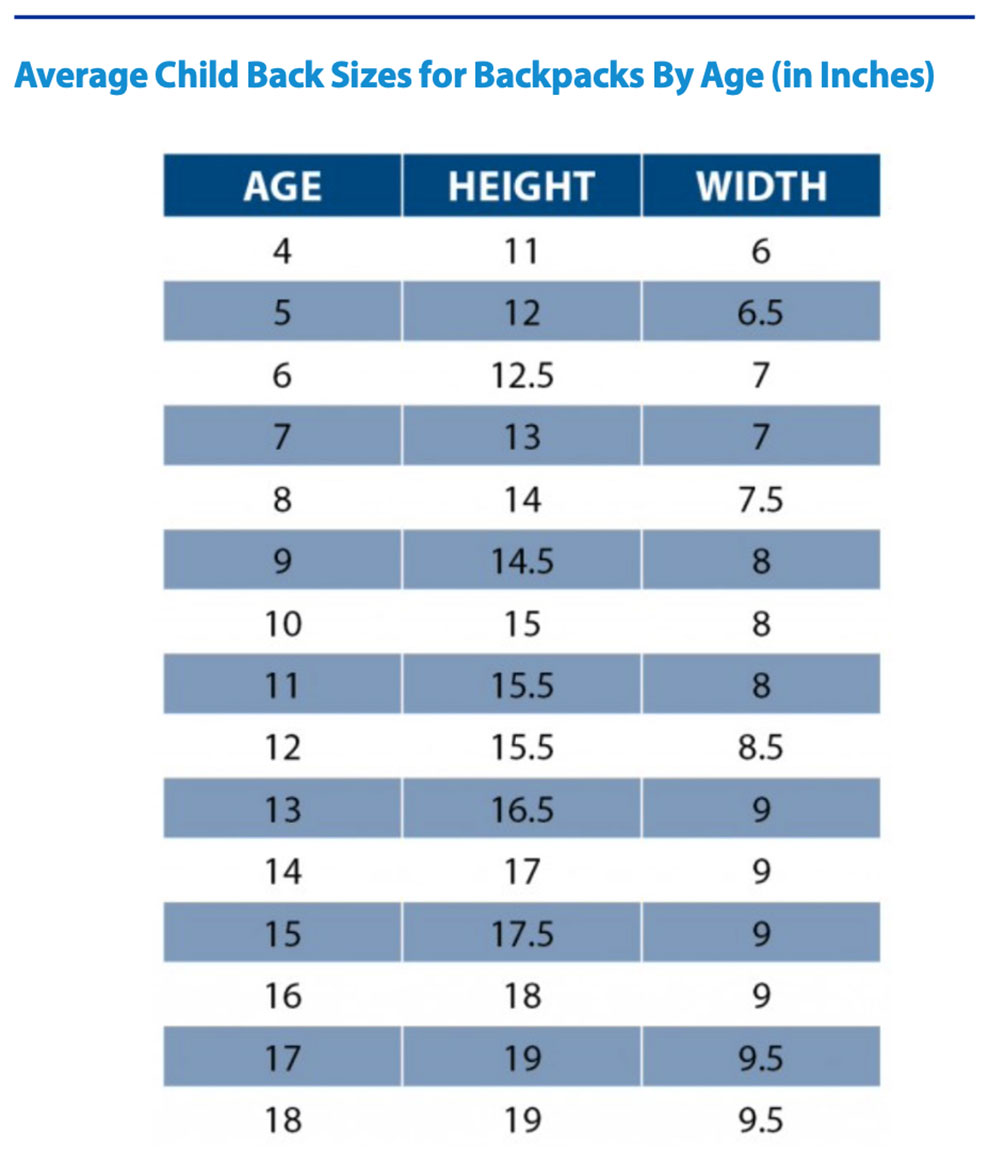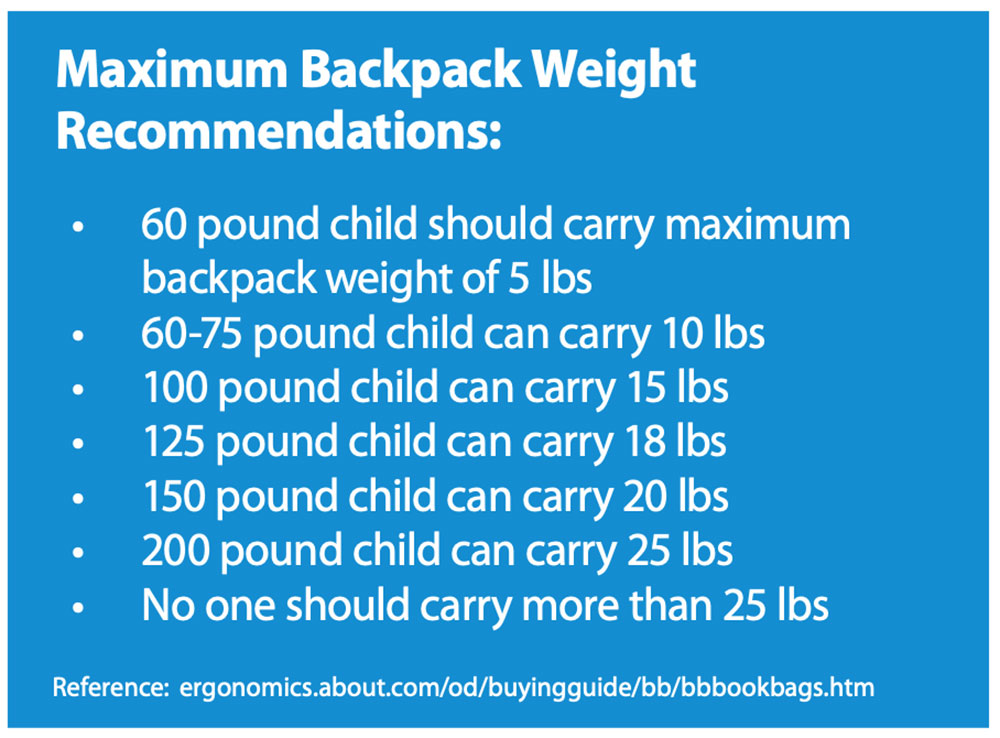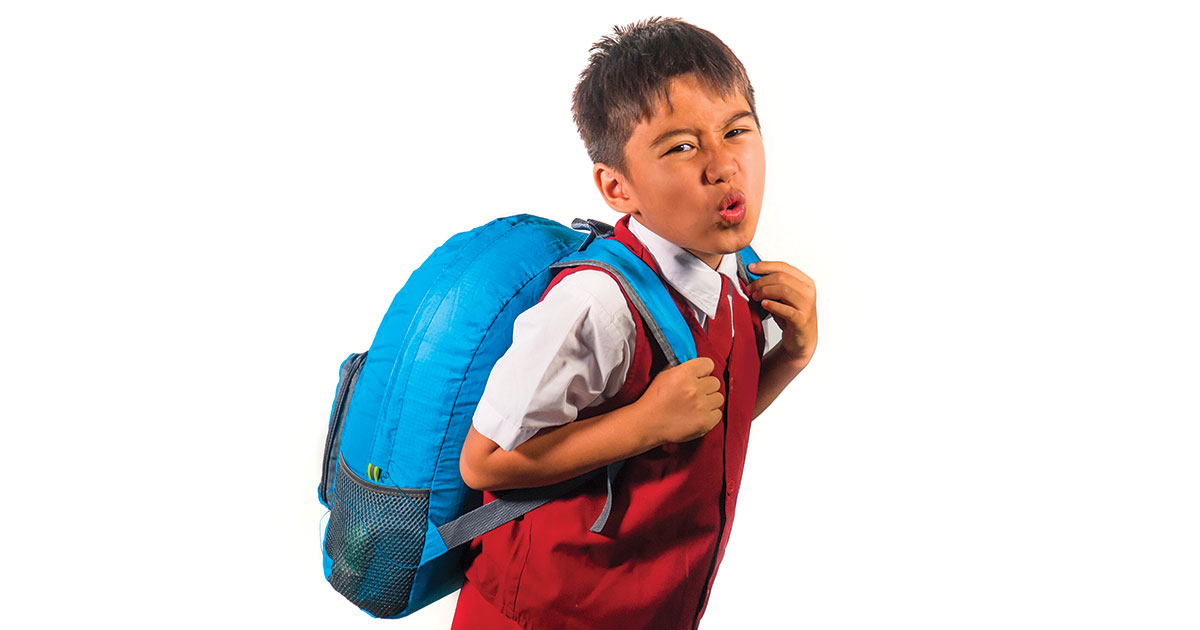With summer coming to an end and we gear up for another school year, we would like to bring to your attention to an essential aspect of a student’s well-being – Backpack Safety! Here are a few tips to keep in mind when shopping with your child to make sure they don’t have any unnecessary back pain this year.
Choosing the Right Size
- Selecting the correct size backpack is crucial to maintain a healthy posture and prevent unnecessary strain on the body. Encourage your child to opt for a backpack that is proportionate to their body size.
- Should not extend above shoulders.
- Should rest in contour of low back (not sag down toward buttocks).
- Should sit evenly in middle of back.
A good ergonomic backpack should be no larger than a child’s back. To simplify matters, take two measurements of your child’s back and use them for the maximum height and width of the backpack. This will ensure that the backpack is the proper size for the child’s body.
Find the maximum height by measuring the distance from the shoulder line to the waistline and adding two inches. The shoulder line is where the backpack straps will actually rest on the body. This is located about halfway between the neck and the shoulder joint. The waistline is at the belly button. To find the proper width for a backpack, measure between the ridges of your child’s shoulder blades. Adding an extra inch or two here is acceptable. If you cannot measure your child for some reason, this chart should help ensure that that guess is as accurate as possible. Remember, better that your child ends up with a backpack that is slightly too small than one that stresses their shoulders because it is too large.

Ensuring the Right Fit
- Shoulder straps should rest comfortably on shoulders and underarms, with arms free to move – tighten shoulder straps to achieve this fit.
- Tighten hip and waist straps to hold pack near body.
- Padded straps help even pressure over the shoulders.
Mindful of Weight
- The weight of the backpack is a key consideration to prevent excessive stress on the back and shoulders. As a general guideline, a loaded backpack should not exceed 10-15% of the student’s body weight. Regularly check and clean out the backpack to avoid carrying unnecessary items that contribute to the overall weight.

Lifting of Pack
- Proper lifting is done by bending the knees, squatting to pack level, and keeping pack close to body to lift first to waist level and then up to shoulders.
Proper Carrying Techniques
- Teach your child the correct way to wear and carry their backpack.
- Both shoulder straps should be used at all times to evenly distribute the weight.
- Adjust the straps to ensure the backpack fits snugly against the back, with the bottom of the backpack resting in the curve of the lower back.
- Spinal forces increase with distance from the body’s center.
Organizing the Contents
- Promote good organization within the backpack to distribute weight evenly and prevent items from shifting.
- Encourage your child to use all available compartments wisely and place heavier items closest to the back. This will help maintain balance and minimize strain on the body.
Posture
- Uneven stresses on the spine can cause muscle imbalances. This can lead to pain and possibly functional scoliosis.
If your child does start to complain of constant back pain, talk to your pediatrician and make sure that it isn’t a more serious issue such as scoliosis.
Scoliosis is a medical condition in which the spine is curved either front to back or side to side and is often rotated to one side or the other. It can occur at birth (congenitally), develop over time having no obvious cause, but often seen related to posture and growth (idiopathically) or due to an injury or the other condition (secondarily), such as cerebral palsy or muscular dystrophy. The most common type is adolescent idiopathic scoliosis. It usually develops between the ages of 10 and 15, during periods of rapid growth. There are two kinds of curves, single, or “C” curves, and double, or “S” curves. “C” curves are slightly more common than “S” curves. The curve can occur in the upper back (thoracic), lower back (lumbar), or a combination of both.
Strength for necessary upright postures of daily life is essential. Sometimes it cannot be maintained due to a “growth spurt,” fatigue from daily postural demands or poor postural habits common among adolescents. A physical therapist can analyze a patient’s history, habits and activities which may be contributing to their curvature and symptoms. Common findings include tightness and decreased motion and strength in the hips and pelvis, causing the lumbar spine to compensate with side bending and rotation. Treatment will include muscular re-educating techniques and manual techniques to restore motion, posture training, specific strengthening and home exercises.
By following these simple guidelines, we can help ensure our students’ well-being and promote a healthy lifestyle.
©2023HealthSpot Reference: ergonomics.about.com/od/buyingguide/bb/bbbookbags.htm

